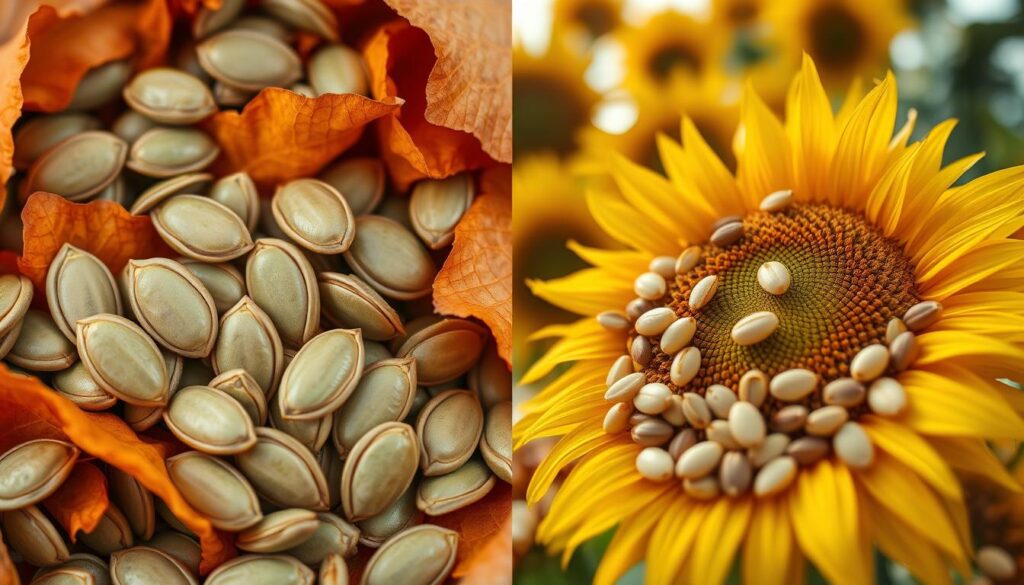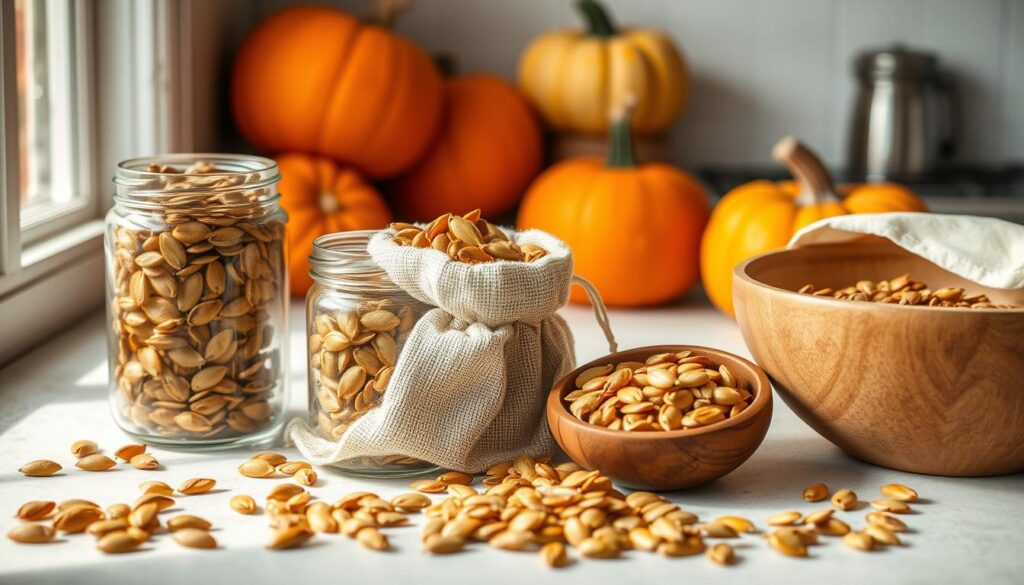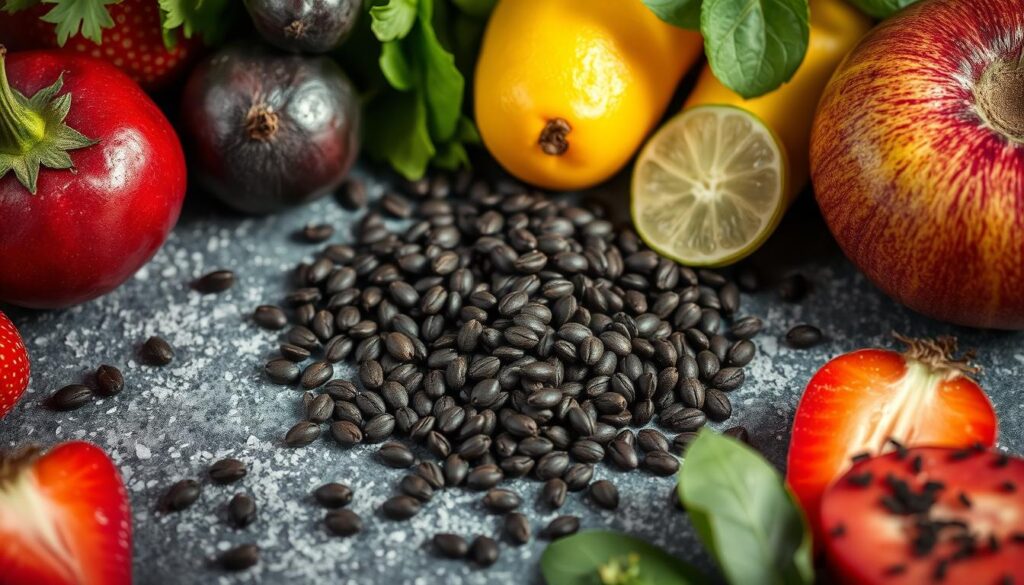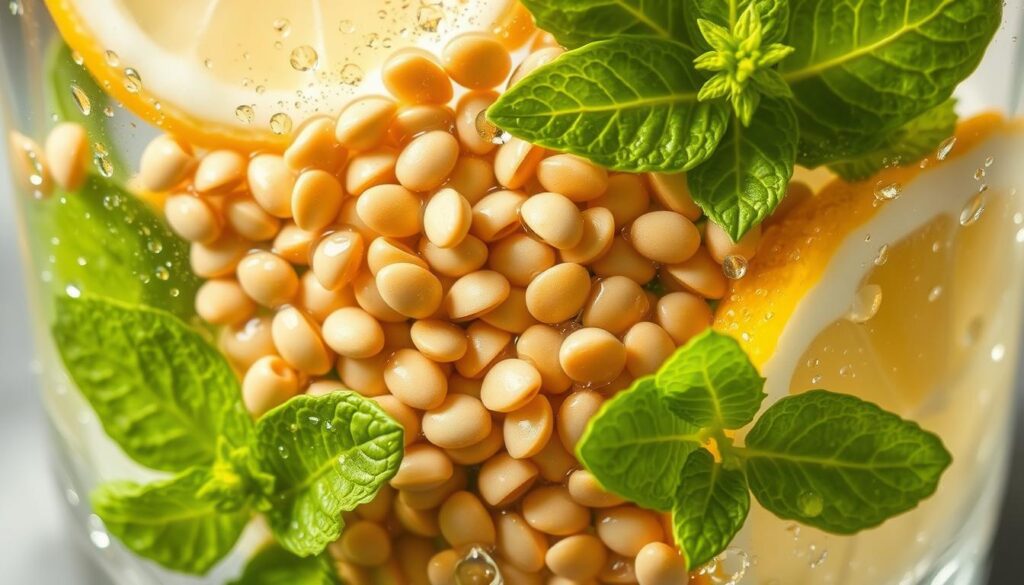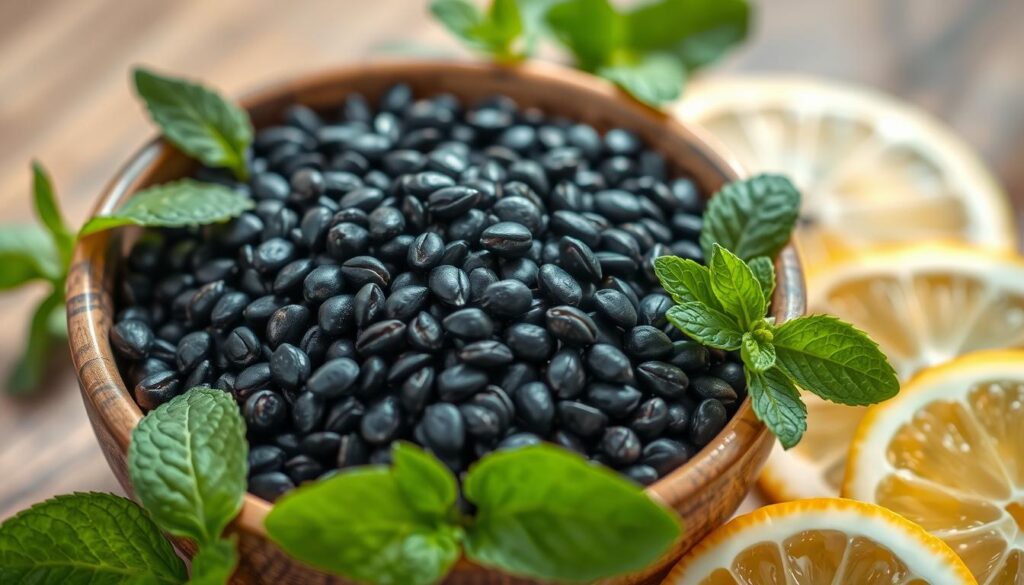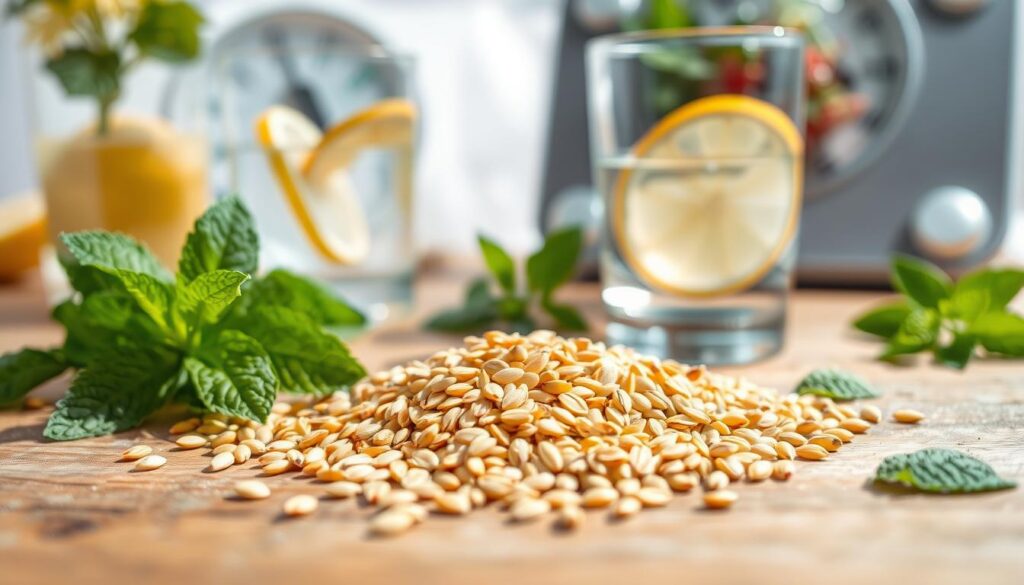Ever thought about how to add chia seeds to your daily life? As someone always on the go, I know how key it is to have easy access to foods that boost health. Buying chia seeds online is a big win for this.
Chia seeds are a superfood full of nutrients like omega-3 fatty acids, protein, fiber, and antioxidants. By shopping online, I can easily get this ingredient. It helps with heart health, digestion, and even brain function.
Key Takeaways
- Chia seeds are a nutrient-dense superfood with a wealth of health benefits.
- Purchasing chia seeds online provides convenient access to this versatile ingredient.
- Incorporating chia seeds into your daily routine can boost your overall wellness.
- Chia seeds offer a low-calorie, high-energy option for those seeking a nutritious snack.
- Explore delicious chia seed recipes to unlock its culinary potential.
Starting your journey to better health? Let’s explore chia seeds and see how buying them online can change your life. Are you ready to try this superfood and feel its amazing benefits?
Unlock the Power of Chia Seeds Online
Buying chia seeds online is easy and convenient. You can get top-quality organic chia seeds at home without going to stores. This is great if you want to improve your health, lose weight, or try new recipes. Shopping for chia seeds online is easy and fits your busy life.
Discover the Convenience of Purchasing Chia Seeds from the Comfort of Your Home
Our lives are busy, and time is valuable. The internet makes it easy to find health products like best chia seeds for weight loss. With a few clicks, you can look at many organic chia seeds for sale and get them delivered to you.
- Enjoy a 9-month shelf life for your chia seeds, ensuring freshness and convenience.
- Each order comes with 12 items, providing ample supply for your daily needs.
- Compact dimensions of 20 x 5 x 15 cm make for easy storage and transport.
Forget about the trouble of finding chia seeds in stores. Enjoy the easy way of buying chia seeds online. With just a few clicks, you can start using this superfood to improve your health and wellness.
What are Chia Seeds?
Chia seeds are small, edible powerhouses from the Salvia hispanica plant. They are full of chia seeds nutrition. This includes omega-3 fatty acids, protein, fiber, antioxidants, and vitamins and minerals. That’s why chia seeds are known as a chia seed powder superfood.
Chia seeds are great for health. They have 3 times more iron than spinach and 3 times more antioxidants than blueberries. They also have 10 times more zinc than milk. Plus, they have double the potassium of a banana and twice the omega fatty acids of walnuts.
Chia seeds are very versatile. You can eat them raw, turn them into a powder, or soak them to make a gel. This makes them easy to add to smoothies, baked goods, and many dishes.
| Nutrient | Comparison |
|---|---|
| Iron | 3 times more than spinach |
| Antioxidants | 3 times more than blueberries |
| Zinc | 10 times more than milk |
| Omega Fatty Acids | Twice the amount of walnuts |
| Potassium | Double the content of a banana |
Chia seeds are full of chia seeds nutrition and are very versatile. That’s why they’re a favorite superfood for health-conscious people worldwide.
“Chia seeds are packed with essential nutrients that can benefit your overall health. From heart health to weight management, these tiny seeds are a powerhouse of goodness.”
Chia Seeds: A Nutritional Powerhouse
Explore the Impressive Nutrient Profile of Chia Seeds
Chia seeds are known for their amazing nutritional value. They are a true superfood. These small seeds are packed with nutrients that help keep you healthy and feeling good.
They have a lot of benefits. Chia seeds can increase your energy, help with digestion, and make your skin and hair look great.
One ounce (28 grams) or two tablespoons of chia seeds has 138 calories. It also has 4.7 grams of protein, 8.7 grams of fat, 11.9 grams of carbs, and 9.8 grams of fiber. This makes chia seeds a great choice for health.
Chia seeds are full of omega-3 fatty acids, giving you more than 5 grams per ounce. They also have a lot of vitamins and minerals like calcium, iron, magnesium, phosphorus, zinc, vitamin B1 (thiamine), and vitamin B3 (niacin).
Chia seeds have a lot of nutrients. They have 3 times more iron than spinach, 3 times more antioxidants than blueberries, and 10 times more zinc than milk. They also have 2 times more omega fatty acids than walnuts and 2 times more potassium than bananas. These facts show how powerful chia seeds are.
Chia seeds are good for your health in many ways. They support heart health, bone strength, energy levels, and digestion. Adding these seeds to your daily meals is a simple way to improve your health.
“Chia seeds are a true superfood, offering a nutrient-dense profile that supports various aspects of health and well-being.”
chia seeds online: The Ultimate Superfood Delivery
Buying chia seeds online is easy and quick today. You can find many high-quality, organic, and non-GMO options. This makes sure you get the best for your diet.
Looking to add chia seeds to your smoothies or snacks? Online shopping makes it easy. With just a few clicks, chia seeds can be at your home. No need to go to the health food store.
The Nutritional Benefits of Chia Seeds
Chia seeds are full of nutrients, making them a great superfood. They have omega-3 fatty acids for heart health and lots of dietary fiber for digestion and weight control.
Chia seeds also have all the essential amino acids for protein. Plus, they’re full of antioxidants to fight free radicals and reduce inflammation. This helps you stay healthy.
| Nutrient | Amount per 100g |
|---|---|
| Energy | 486.77 kcal |
| Protein | 23.98g |
| Total Fat | 26.73g |
Buying chia seeds online lets you easily add this superfood to your daily meals. Enjoy the health benefits it brings.
“Chia seeds are a true superfood, packed with essential nutrients that can support overall health and well-being.”
Online shopping makes getting chia seeds easy. It brings this versatile ingredient right to your door. Now, adding it to your meals and snacks is simple.
Versatile and Delicious Chia Seed Recipes
Chia seeds are super versatile and fit into many tasty recipes. You can make energy-boosting puddings and smoothies or add them to baked goods and salads. They bring a nutritional boost and a special texture and flavor to your food.
Embrace Culinary Creativity with Chia Seeds
Chia seed pudding is a favorite recipe. It’s great for breakfast, a snack, or a dessert. You mix chia seeds, almond milk, and a sweetener like maple syrup or dates. But, you can change up the flavors and toppings to make it your own.
To make a tasty chia seed pudding, mix chia seeds, almond milk, and raw cacao powder. Add sweetener like Medjool dates or maple syrup. Then, top it with coconut flakes, cacao nibs, berries, or nuts. It’s a creamy, satisfying treat full of nutrients.
Chia seeds aren’t just for pudding. Use them in savory and sweet dishes too. Add them to salads or mix into bread, muffins, and cookies. They’re a great addition to any kitchen, letting you try new recipes with this superfood.
With chia seeds, the sky’s the limit. They’re great for adding nutrition to your meals or just for their unique taste. So, get creative in the kitchen and try out all the tasty chia seed recipes you can find.
Choosing the Right Chia Seeds Online
When you buy chia seeds online, think about a few key things to get the best quality. Chia seeds are full of nutrients like protein, fiber, omega-3 fatty acids, and antioxidants. To get the most health benefits, pick the right bulk chia seeds purchase for your needs.
Factors to Consider When Buying Chia Seeds Online
When looking at gluten-free chia seeds online, remember these points:
- Organic and Non-GMO: Choose chia seeds that are certified organic and non-GMO. This means they don’t have synthetic pesticides, herbicides, or genetic changes.
- Source and Origin: The source and origin of chia seeds affect their freshness, nutrient levels, and quality.
- Packaging and Storage: Good packaging and storage keep chia seeds fresh. Go for airtight containers that keep out light and moisture.
- Texture and Quality: Make sure chia seeds are plump, the same size, and look good. They should not have any color changes or dirt.
- Price and Value: Look at prices from different sellers to get the best deal. But don’t choose a cheaper option if it’s not good quality.
| Brand | Price Range | Key Features |
|---|---|---|
| Himalayan Natives | Rs 500 – Rs 1,500 | Organic, natural, and vegetarian chia seeds |
| RR Agro Foods | Rs 300 – Rs 800 | Organic chia seeds with high fiber content |
| True Elements | Rs 400 – Rs 1,200 | Natural, trust-based relationships with clients |
By doing your homework and picking the right buy chia seeds online, you can enjoy all the benefits. You can add it to your daily routine with confidence.
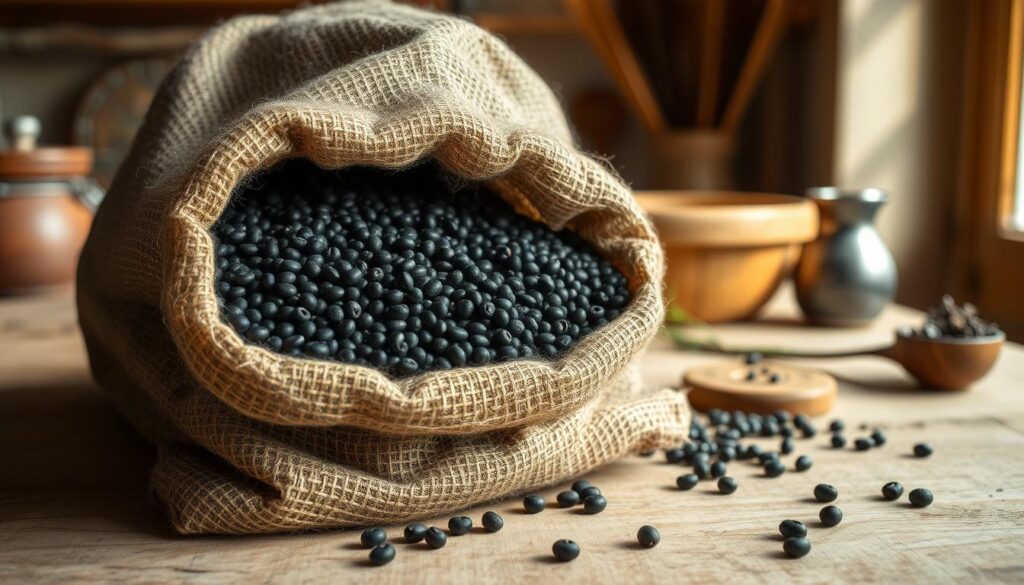
Chia Seeds: A Sustainable and Eco-Friendly Choice
Chia seeds are great for your health and the planet. They are grown with little water and no harmful chemicals. Buying chia seeds online helps farmers who care for the earth.
More people want food that is good for the planet and animals. Chia seeds fit this need perfectly. They show you care about the earth and your health.
Organic chia seeds need less water to grow than many crops. They don’t use harmful chemicals, keeping the land clean. This helps nature stay healthy.
| Sustainability Initiatives | Environmental Impact |
|---|---|
|
|
Buying chia seeds online helps your health and the planet. This superfood shows you care about the earth and your health. It’s a wise choice for you and the planet’s future.
“Chia seeds are not only a nutritional powerhouse but also a champion of sustainability. Choosing them is a win-win for your health and the environment.”
Incorporating Chia Seeds into Your Daily Routine
Adding chia seeds to your daily routine is easy and beneficial. You can put them in your chia seeds for smoothies or overnight oats. Or, you can sprinkle them on salads, yogurt, or baked goods.
Begin your day with a smoothie that has chia seeds. These seeds make the smoothie thicker and add fiber, protein, and omega-3 fatty acids. For a special breakfast, soak chia seeds in milk or plant-based milk overnight. Then, add fresh fruit, nuts, and honey on top for a tasty chia pudding.
Chia seeds are great in savory dishes too. You can put them on salads, mix them into soups or stews, or use them as a topping for roasted veggies. Chia seeds fit well in both sweet and savory dishes, giving you the benefits of chia seeds nutrition all day.
Try soaking the seeds in water or milk to make them easier to digest and absorb better. Adding chia seeds to your meals can help your health, increase your energy, and open up new food ideas.
“Chia seeds are a nutritional powerhouse, packed with fiber, protein, and essential minerals. Incorporating them into your daily routine is a simple way to improve your overall health and well-being.”
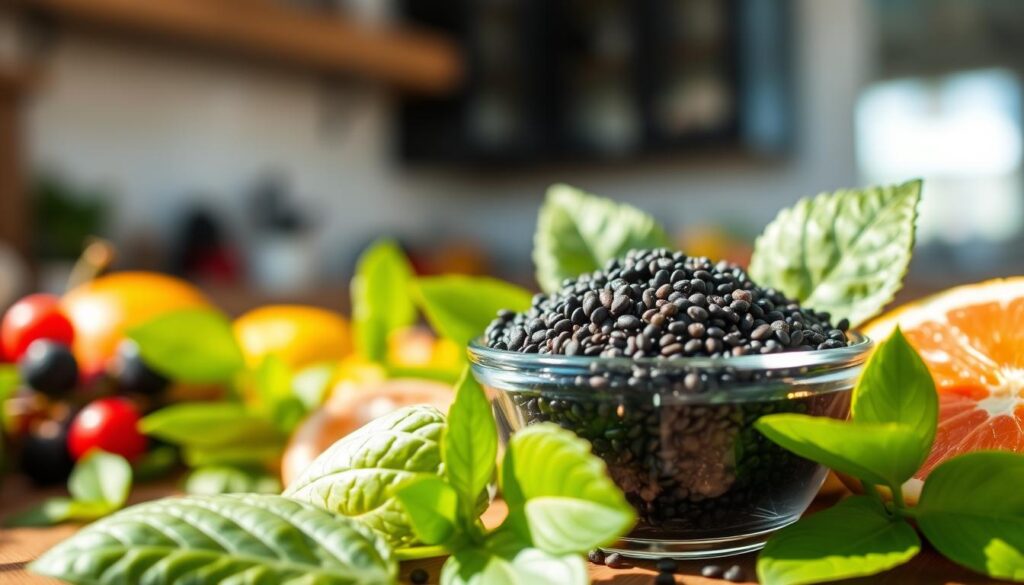
Conclusion
As we wrap up our look at chia seeds, it’s clear they’re a superfood powerhouse. You can easily buy chia seeds online and add them to your daily meals. They help with wellness and add a fun crunch to dishes, making them a great addition to any diet.
Looking to boost your energy or improve your digestion? Chia seeds are a great choice. They’re packed with protein, healthy fats, fiber, and antioxidants. This makes them a superfood you should try.
So, why not start your journey with chia seeds today? With just a few clicks, you can get this amazing superfood at home. It can make your meals better and improve your health. Chia seeds offer convenience, versatility, and great nutrition. Let them make your daily routine better in a tasty and healthy way.
FAQ
What are the benefits of chia seeds?
Chia seeds are full of nutrients like omega-3 fatty acids, protein, fiber, and antioxidants. They help with overall health, increase energy, and improve digestion.
How can I incorporate chia seeds into my diet?
You can add chia seeds to smoothies, overnight oats, baked goods, salads, and more. They also make a great snack by themselves.
Where can I buy chia seeds online?
You can find high-quality, organic, and non-GMO chia seeds online at many trusted stores. This makes it easy to add chia seeds to your diet.
How do I choose the best chia seeds online?
Look for organic, non-GMO chia seeds without additives or preservatives. Check the source, origin, and how they are packaged and stored.
What are the potential side effects of chia seeds?
Chia seeds are usually safe for most people in small amounts. But, some might get bloating or gas when they start eating them.












